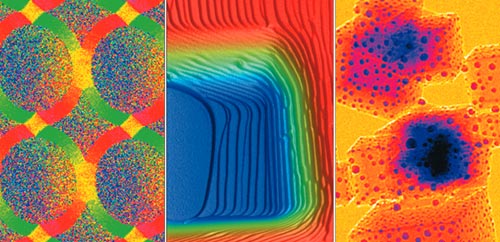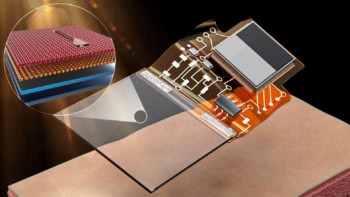The Nanotech Pioneers: Where Are They Taking Us?
Steven A Edwards
2006 Wiley-VCH
254pp £17.99/$27.95 hb

What has the $18bn spent worldwide on publicly supported nanotechnology research done for us so far? According to some jaded observers, the main outcomes have been stain-resistant trousers and better sunscreen. The gulf between the promises of those who extol nanotechnology and what has been delivered in the marketplace is indeed large: dangerously large in a world where investment in science is predicated on unrealistic expectations of fast economic returns. The science underlying nanotechnology is fascinating, but much of the writing about its business potential is worryingly reminiscent of the dot-com bubble in its uncritical and self-serving optimism.
Steve Edwards, as a consultant and industry analyst, comes from the business end of the spectrum. The Nanotech Pioneers, though, is refreshingly free of the hype and press-release punditry that plagues too much writing about the potential applications of nanotechnology. Instead, Edwards displays both a real understanding of the science that underlies the hype and an appreciation of the all-important difference between what is possible in principle and what makes economic sense.
But who are the nanotech pioneers? Just as few people can agree on how to define nanotechnology, opinions differ as to who was responsible for starting the field. The iconic Richard Feynman is a popular choice, on the strength of his 1959 lecture “There’s plenty of room at the bottom”, but beyond that there is little consensus. Edwards gives plenty of space to the controversial figures of Eric Drexler, Ralph Merkle and Ray Kurzweil, whose visionary pronouncements have made their brand of nanotechnology a staple for science-fiction writers and futurists – to the dismay of many academic nanoscientists. Mike Roco, the Washington power-broker behind the well-funded National Nanotechnology Initiative, also gets his fair share of attention.
Moving back from politics to science, though, Edwards also credits as founding fathers of nanotechnology both the inventor of the scanning tunnelling microscope, Gerd Binnig, and the electron-microscope pioneer Ernst Ruska. While everyone agrees on the importance of scanning probe microscopes in the emergence of nanotechnology, the re-emphasis Edwards places on electron microscopy is welcome. Electron microscopes have been around for a long time, and this familiarity has perhaps lessened the impact of recent developments, such as aberration correction for sub-Ångstrom resolution.
Edwards identifies three important precursors of nanotechnology – lithography and patterning, biotechnology, and supramolecular chemistry – and three areas in which nanotechnology shows early signs of commercial promise. For fullerenes – the new forms of carbon discovered by Sir Harry Kroto and the late Richard Smalley more than 20 years ago – the road to applications has been slow, but some are now emerging in areas such as unconventional solar cells. There are interesting potential applications in drug delivery for dendrimers, a type of polymer molecule with a branched “star-burst” structure. And quantum dots – tiny semiconductor particles the emission and absorption spectra of which vary with size – can replace fluorescent dyes in applications such as the tagging of biological molecules in cell-biology experiments.
It is clear, however, that most of the potential uses for nanotechnology are still to find their way out of the laboratory. Biology is a potent inspiration, and Edwards cites some fascinating examples of biomimetic nanotechnology, such as synthetic analogues of the marvellously sticky gecko’s foot. The interface between biology and nanotechnology also leads to thoughts of medical applications. Here we can expect improved methods for delivering drugs and diagnosing diseases in the near term, and on a longer timescale perhaps artificial organs and direct interfaces between brain and machine. From nanophysics, Edwards is enthusiastic about the potential of spintronics and plastic electronics.
Looking forward, the author sets three grand challenges for nanotechnology. The importance of finding clean and renewable energy sources is surely uncontroversial, and potential contributions from nanotechnology in the shape of low-cost solar cells, improved fuel cells and economically viable hydrogen storage must be worth pursuing. I am personally less convinced about the importance of the space elevator – a cable linking a geostationary satellite to the Earth’s surface – but it is certainly an ambitious target for researchers to make a material strong, stiff and light enough for this purpose. Finally, Edwards is optimistic about the potential for semiconductor nanotechnology to permit an economically viable implementation of quantum computing.
There has been much discussion of what nanotechnology might mean for society at large, and what its downsides could be. These debates are comprehensively covered by Edwards, from the far-fetched but dramatically compelling eco-disaster of self-replicating nanobots to the much more likely problem that some nanoparticles might, by virtue of their size, prove to be more toxic than the materials from which they are derived. This discussion is coloured by an almost-caricatured North American viewpoint, in which Europeans are seen as technology-averse while Americans are universally visionary and forward-looking. Canada, meanwhile, is written off as “a European country that happens to be located in North America”.
But there is actually a strange passivity and pessimism on display here about the prospects for managing the technology’s inevitable downsides. On the question of potential toxicity and environmental problems from nanomaterials, Edward says, “Unfortunately, we will still most likely deal with nanotech environmental hazards in the way that we always have, by ignoring them until they have become disastrous in an obvious way.” Likewise the author washes his hands of responsibility for any broader societal issues: “Neither nanotechnologists nor the institutions that employ them bear any responsibility for the organisation of society.” I would like to think we can do better than that.
Even if the wilder promises of the economic impact of nanotechnology prove exaggerated, it is clear that the applications will go beyond stain-resistant trousers. I can recommend this book as a well-written and sane introduction to this confusing and contested field.



